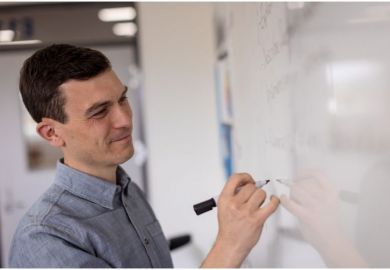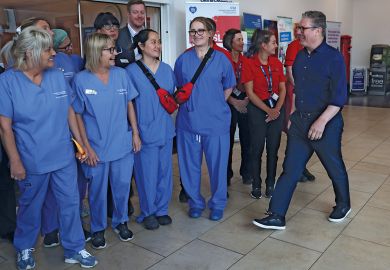Institutional histories are hard to write. More often than not, they are commissioned or written by those who have a continuing commitment to the institution concerned and publication is in part a political act. Authors of such books (and I declare myself to be one) are conscious that they may be less than objective about an organisation to which they have an emotional attachment and owe their livelihood, even if they willingly recognise its shortcomings.
Moreover, if one's subject is a valued and cherished college that has constantly to fight its corner in the rough-and-tumble world of higher education, any semi-autobiographical account is bound to be seen as a manifesto for survival. Rereading Sir Cyril Philips' original statement "The School of Oriental and African Studies 1917-1967", a much-shortened version of which forms the introductory chapter to the present book, I was struck by what a skilfully crafted argument it presented on behalf of a reformed Soas. It was subtle in being directed at two different sets of reader. For an outside and politically influential lay readership, it was a gently argued and balanced case for Soas; for domestic readers, it was a fierce vision for the future with a barely concealed subtext that unless change happened along the Philips line, the future of Soas might be in doubt.
David Arnold and Christopher Shackle - both Soas professors - and their various Soas contributors have pulled off a similar coup. Their edited volume is in part a celebration of Soas in the Philips and post-Philips era, but it is also a powerful statement about the importance of having in Britain a university dedicated to the study of the African and Asian continents.
There is much to enjoy. There are excellent chapters on the library and archives, and on the development of the Soas estate. Richard Rathbone gives a good account of a succession of directors - a chapter that says much about the internal organisation of the school and the management of colleagues, while indicating that academic leadership is hard to achieve.
Three substantial chapters - by Shackle on language studies, J. D. Y. Peel on the arts and humanities and Terence Byres on the social sciences - give a fair portrayal of the school's scholarly successes while not glossing over disappointments or hiding outright failure. In a very personal chapter at the end of the book, Hugh Baker writes of his experience at Soas, from student to retired professor. It is a moving account for, as his title ("And what should they know of Soas, who only Soas know?") suggests, there is a lifelong ambivalence in his relationship with his academic family.
So what is it that lurks beneath the surface that makes Soas such an interesting case study of contemporary higher education, and which makes this book such interesting reading?
The problem seems to be this: Soas is a highly specialised university; it is asked to do very specific (and very difficult) things; it requires considerable resources to do them effectively, and from time to time these are forthcoming. But it does not fit the normal pattern of university education: it is excessively dependent on fickle public funding and goodwill, and the scholarly nature of its activities risks being pulled apart by competing academic interests. Is it a teaching institution? Or should it concentrate on research? Should it offer services of a clearly applicable kind to the Government and industry? Or is there an obligation to pursue independent scholarship, regardless of its relevance? Above all, how sound is the philosophy of studying a region rather than a discipline?
Soas came into being in the early 20th century because it was thought that Britain needed knowledge of those areas of Asia and Africa that were part of the Empire. In the 19th century, many talented individuals overcame the lack of an institutional framework to guide their path, usually by learning from experience. Occasionally, special courses were set up to help "train" young men for service to the Empire; but these lacked long-term prospects and were too utilitarian. Britain's most imperial moment seemed an opportune time to do something on a more regular basis.
But the enthusiasts ran up against problems: where should the college be located, who would attend and how was it all to be paid for? Powerful men set about putting things to rights. But the obstacles were enormous, and at the outbreak of war in 1939, Britain was still short of people who knew Arabic, Persian, Chinese and Japanese, and even shorter of those who had much understanding of the societies that were either allies or enemies.
Under pressure of war, renewed efforts were made to remedy this lack, and numbers of clever classicists and philologists learnt Asian and Middle Eastern and African languages to be used on the ground or to be applied in decoding captured messages at Bletchley Park.
After the war, government funds were forthcoming to enhance work on Africa and Asia at Britain's universities. Soas was the major beneficiary of this expansion, but it proved unsustainable. Five and ten-year plans were put in place, staff were employed and research projects got under way. But, after a first flush of enthusiasm, students were slow to come forward. Either the prospect of learning difficult languages was too daunting for them, or the courses offered were too unconventional for the regular undergraduate to take a chance on them. Consequently, with a large staff overhead, expensive property and a huge library commitment, Soas found itself with few students: and, irony of ironies, most of them were not from Britain but rather from the countries of the Commonwealth whose citizens found it attractive to come to a prestigious British university to take a degree in their own language and culture.
The nature of the Philips revolution was to revisit the philosophical basis of the school. Everyone had agreed that language was sovereign: posts had been filled by those who approached language from a classical or philological background. No true scholar of this sort set much store by an ability to speak or to read a language in its modern form. A distinguished Soas export to Cambridge University thought it irrelevant for students to learn colloquial Arabic, and another such export believed that modern India could not be understood without a lifelong study of Sanskrit. For them, contemporary literature or modern history were mere journalism; economics and development studies the most dismal of sciences and unworthy of recognition; and while archaeology might be admitted as shedding light on an ancient culture, its close proximity to anthropology meant it had to be watched with care.
The Treasury's subcommittee, chaired by Sir William Hayter, and on which Philips had great influence, sought to change this notion of Oriental and African studies: language was still dominant, but it was to be a tool - a help to understanding. More emphasis was now to be placed on other disciplines, especially history, but also on the still-emerging social sciences. A premium was to be set on research, but strenuous efforts were to be made to encourage regular British undergraduates to follow a BA in area studies, where it would be possible to combine study of a new language with economics or law or geography, and to show an awareness of the higher arts, so that music or painting might be included in the curriculum.
The accounts in this book show how controversial all this was. Initially, there was great enthusiasm, and the tensions arising between disciplines produced interesting work. But still the students did not come, and those who did came in large numbers from overseas. So when university funding came under pressure in the early 1980s, it was not surprising that these subjects became an easy target for an economy drive. Hence, a promising development was brought to a halt and, paradoxically, as lobbies from business kept pressing for more support in their dealings with the outside world, Soas began to retrench and then to regroup in straitened circumstances. Moreover, it began to adopt educational strategies that, to some extent, cut across a broader mission of research and learning. The demand was for basic language training - labour intensive but something few university lecturers are very good at - or courses in vocational subjects such as law, in which language requirements had a very small part. This sort of activity sits uneasily with managing advanced masters and doctoral programmes, or with developing high-level research in the humanities and social sciences.
SOAS since the Sixties identifies these problems, but the authors do not despair. Rather, in the end, they find that the balance lies on the positive side of the equation. No matter how many eccentrics have inhabited the institution, or how sharp the tensions or how few the students, Soas has, over nearly a century, and not least in the past 40 years, produced a steady stream of excellent scholarship and a constant flow of graduates who owe everything to the education it provides, however costly, and who venture into a Britain beyond Thornhaugh Street knowing that they who know of Soas do have knowledge of the importance of the world at large.
Gordon Johnson is president of Wolfson College, Cambridge, and a former director of the Centre of South Asian Studies at Cambridge.
SOAS since the Sixties
Editor - David Arnold and Christopher Shackle
Publisher - School of Oriental and African Studies
Pages - 185
Price - £12.99
ISBN - 0 7286 0353 5
Register to continue
Why register?
- Registration is free and only takes a moment
- Once registered, you can read 3 articles a month
- Sign up for our newsletter
Subscribe
Or subscribe for unlimited access to:
- Unlimited access to news, views, insights & reviews
- Digital editions
- Digital access to THE’s university and college rankings analysis
Already registered or a current subscriber?



